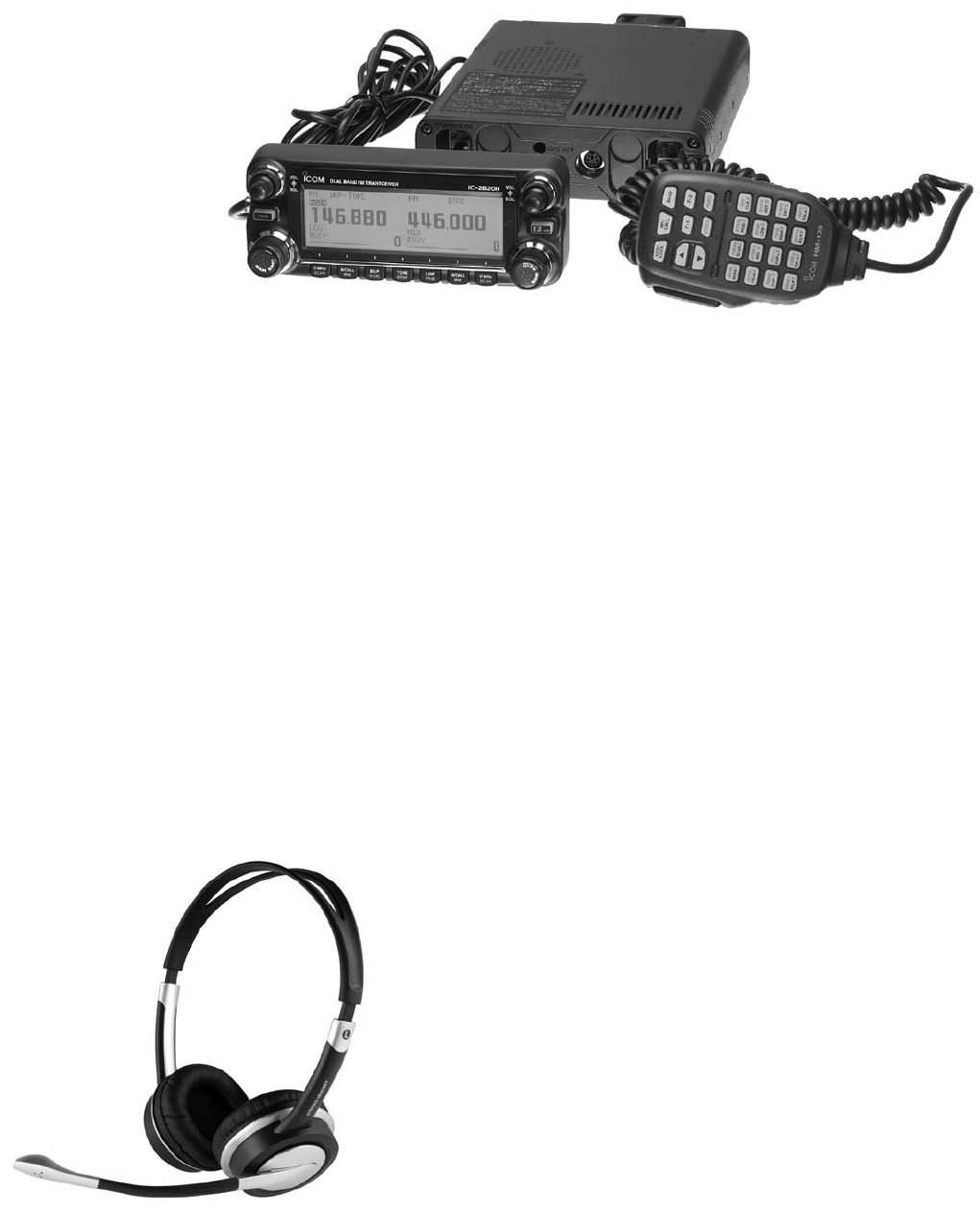Operating instructions

Choosing a Ham Radio 23
ings at other frequencies.
Antenna switches allow you to select different antennas quickly. The “common” port of
the switch connects to the output of the radio or antenna tuner with a short jumper of coax
and the antenna system coaxial cables then connects to the selectable ports of the switch.
Some radios have an antenna switch built-in. As long as we’re on the subject, it’s useful
for an HF transceiver to have a receive antenna (RX ANT) input for a special receiving
antennas or external filters.
All manufacturers offer separate speakers for their radios that sound somewhat better
than the radio’s small built-in speakers. For the highest quality “copy” of signals, though,
use a pair of headphones. A set intended for music will do or you can buy headphones
designed specifically for radio communication. A boom-set is headphones combined with
a boom microphone. The boom mike frees you from having to hold a hand mike or speak
into a desk microphone. The voice-operated transmit (VOX) option of most radios frees
your hands from having to press a Push-to-Talk (PTT) switch.
Computer Interfaces
What if you want to make digital mode contacts using a PC or just
control the rig from the PC keyboard? There are several software
packages available and some are even free! There are three types of
computer interface connections to ham radios.
The first is a control port by which a PC can read, change, and
operate many, if not all, of the radio’s control functions. This allows
a PC to monitor and record your radio’s configuration for logging
contacts and other useful functions. Radios “speak” a control protocol
that is unique to each manufacturer. Most radio control ports are a se-
rial or COM port for communicating with the PC. (Icom radios use a
proprietary CI-V interface.) PC manufacturers are dropping the COM
or serial port, but USB-to-serial port converters are available to solve
that problem.
The second type are called keying interfaces or voice keyers that
allow the PC to key the radio (to send CW) from the keyboard or send
recorded speech through the microphone jack. These are often used
during competitive events called contests or radiosport.
The third type of interface supports digital modes, such as radio-
teletype (RTTY) or PACTOR, the mode used by the ham radio email
Sometransceiversincludetheabilitytoseparatethefrontpanel(the“controlhead”)fromthe
restoftheunitforeasiermobileinstallations.
Aheadset/microphonecombination,
orboomset,combinesthemicro-
phoneandearphonesinoneunit.










